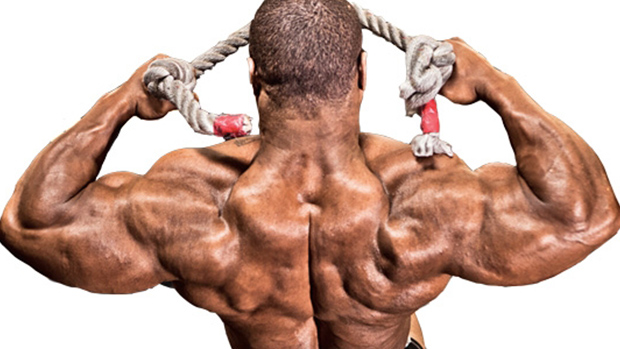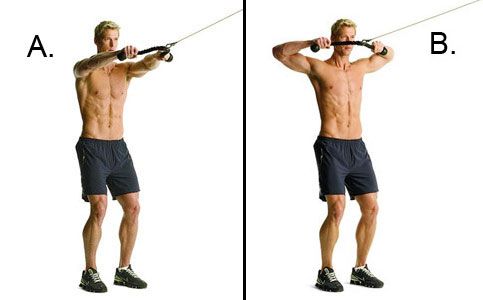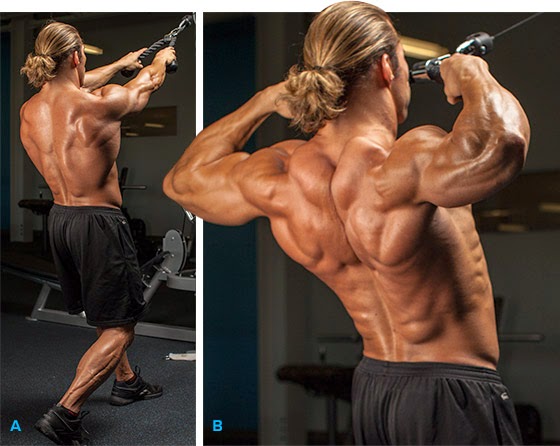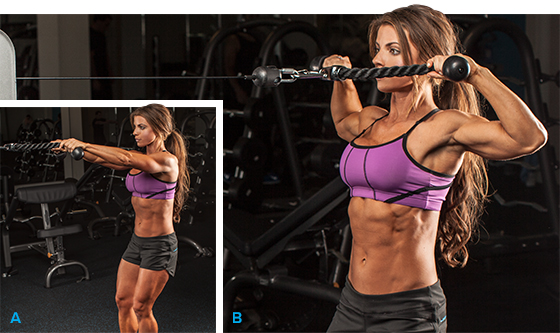 What do you really know about face pulls? It’s true that they are quite simple to do, but do you truly know how and when to do them? We do. And, we explain it all right here.
What do you really know about face pulls? It’s true that they are quite simple to do, but do you truly know how and when to do them? We do. And, we explain it all right here.
It’s time to mix up your strength training routine. With all the vertical and horizontal pressing you do throughout the week, adding a face pull exercise to the mix is a great way to offset that. Get your body back in line, prevent injuries and add a new challenge to your routine all by doing the simple face pull.
Our body is built in such a way that over time it gets used to the load and the muscles stop growing. That is why it is necessary to do different types of load. Just as a paper writer from BidForWriting takes breaks from writing a paper, so in sports you need to change the type of activity.
Though the face pull isn’t quite a power exercise or a boost to your ego, it is definitely beneficial.
Besides, who cares what other people think about your routine?
If you’re showing gains, awesome posture and clocking in with less injuries, then you are already ahead of the game and they will have something to learn from you.
With all of that said, this is one exercise you do not want to perform poorly. By doing so, it can cause more trouble than benefits. Don’t worry. We will go over a few things before you step up to the plate (or pulley).
Benefits Of Doing Face Pulls
Face pulls are very effective and work multiple muscle groups. They can be added to your regular strength routine to balance out your workout. The muscles worked during a simple face pull include the following:
- Deltoids– This is a rounded muscle that’s located at the highest part of the arm and the top of the shoulder. There are three regions of the deltoid muscle. The first region (front region) lifts the arm upward and towards the collarbone. The second region (middle region) moves the arm up and forward as if throwing a baseball underhanded. The final region (back) lifts the arm out to the side.
- Rotator Cuff Muscles– These are a group of muscles (teres minor, infraspinatus, supraspinatus and subscapularis) located inside the shoulder and connecting from the upper arm to the shoulder blade. These muscles are used for internal and external rotation of the arm and abduction.
- Trapezius- A set of triangular muscles that extend across the back of the neck and shoulders. These muscles are used to tilt and rotate the head and neck, shrug the shoulders and twist the arms.
- Rhomboids- These are muscles on the upper back that connect from the shoulder blades to the spinal column. These muscles work to retract the scapula (shoulder blades), pulling them in towards the spine.
Since there are many muscles and more than one joint being worked during a face pull exercise, this is considered a compound movement. Compound exercises are truly beneficial for building muscle and burning fat.
The difference between a compound exercise and an isolation exercise is that with the compound exercise, multiple muscle groups are incorporated.
Meanwhile when doing an isolation exercise, you are targeting only one specific muscle.
Face pulls can be a great exercise to correct the internal rotation of the shoulder joint (rounded shoulders). Many lifters have this rounded shoulder.
Why?
It comes by spending more time on a pushing exercise such as a bench press, and less time (or no time at all) on pulling exercises such as the face pull. This is a great way to balance that problem.
Doing face pulls regularly can also help improve your posture no matter who you are. Say you sit at a desk all day hunched over a computer.
Guess what?
This can cause a huge weakening effect of the muscle groups in your back and shoulders. It’s a good idea to focus on your posture and do exercises that help you correct it. Posture is important for a number of reasons – from proper digestion to spine health – so adding face pulls to your routine is very beneficial for your overall health.
How To Do A Face Pull
We’re ready to get down and dirty.
How?
Simple, we are set to go over the steps you need to do to complete a proper face pull. Are you ready?
Attach your rope to the pulley station and set it to chest level. You can either grasp the rope with a pronated grip (palms facing down) or an underhanded grip. Both grip positions will be effective. With that being said, I find that the underhand grip inhibits you from keeping the rope level to the face (that could just be me) so you should choose the grip that allows you the full range.
Step back and support the weight with your arms completely straightened out. Your stance should be one foot forward (staggered) and knees slightly bent to brace yourself for the exercise. Keep your shoulders back, chest sticking out and retract your shoulder blades (squeeze them together).
With your head facing forward and still, pull the center of the rope towards the center of your face. As you are pulling, imagine that you’re also trying to pull the rope apart. This will enable scapular retraction. Hold this contraction for a second and think about squeezing the back of the deltoid muscles and upper back muscles. Return to the starting position for a completion of the rep.

It’s Time To Double Check Your Form
Think you already know how to perform a face pull?
You might want to double-check a few things. As mentioned, without proper form on face pulls (and any other exercise), you could be doing more harm than good. Face pulls look like quite the simple exercise, something you would find in a beginner workout routine.
Why?
They really are. If you followed the steps outlined, that’s a good thing. Of course, that is not all to keep in mind. There are a few other factors you really need to pay attention to.
Weight
The amount of weight you load up makes all the difference in the world. You may be able to pull quite the load but, if you don’t have good form, this can be a bit of a hazard. When you use too much weight, your lower back may just get invited to the party to compensate. That’s not the muscle group we are aiming for in this particular exercise.
Use just enough weight that allows you to perform three of four sets of 8 to 12 smooth reps. You also do not want to go too light. If those reps don’t get your muscles burning good, they are likely not doing much. Play around with the weight and see what works for you. Strength training should not be easy. It should be challenging.
Pulling Vs. Yanking
A smooth and controlled pull of the rope is what you are aiming for. You don’t want a quick jerking motion.
Why?
This will easily hurt your shoulders when the point is to build strength in them and prevent future injuries from occurring.
Here’s something to think about while you are pulling: Imagine there is a glass of water filled to the brim sitting on the weights at the cable station. Try to avoid spilling that water. Use control, strength and focus.
Elbow Position
Keeping your elbows and wrists in line with your shoulders ensures engagement in your upper back. You do not want to drop your elbows down below your shoulders.
Why?
This engages muscle groups we’re not aiming for. It is also poor form.
Slow Down
Keeping the motion slow is just as important as keeping it smooth. You don’t have to go turtle speed (sorry turtles, I know you have your days). But, the longer you keep your muscles under tension, the more beneficial this exercise will be.
Ask for Assistance
It can be really helpful if you have someone check your back. It is even more helpful if they could press their finger on your spine just in-between your shoulder blades. This will help you be more aware of retraction of your shoulder blades during the exercise. Think about squeezing their finger between your shoulder blades as you pull the rope towards your face.
Watch Your Head
I know you can’t literally look at your own head, but what you do not want happening is finding yourself pushing your head towards the rope. Instead, pull the ropes towards your head. This is a very common error. Just be aware that your head needs to stay straight and stable.

Where Do Face Pulls Fit In To Your Strength Workout?
You can squeeze this exercise in on shoulder day, back day or back/shoulder day, whatever way you usually work it. A few sets of face pulls, two or three times per week, is a great way to get your shoulders in check and upright.
Pushing exercises and overhead lifting is definitely beneficial, but you should work your shoulders in all directions to keep a good balance.
Remember the three zones of the deltoid muscles?
They are built up best when you add three directions to your strength training.
Makes sense right?

Face Pull Workouts
Good, now let’s put a few routines together to give you an idea.
Face Pulls On Back Day
Start with a two set warm-up and rest 60 to 90 seconds in between sets.
Beginner
Front lat pulldown 3 sets X 8-10 reps
Face pull 2 sets X 8-10 reps
One armed dumbbell row 2 sets 8-10 reps
Intermediate
Barbell row 3 sets X 10-12 reps
Face pull 2 sets X 10-12 reps
Regular grip pull-up 3 sets X 10-12 reps
Deadlift 2 sets X 6 reps
Advanced
Wide grip chin-up 4 sets X 15 reps
Deadlift (Heavy) 5 sets X 5 reps
Face pull 3 sets X 15 reps
One armed dumbbell row 4 sets X 15 reps
Seated cable row 3 sets X 15 reps
Face Pulls On Chest Day
Be sure to start with a few warm-up reps and rest 60 to 90 seconds in between sets.
Beginner
Barbell bench press 2 sets X 8-10 reps
Incline dumbbell press 2 sets X 8-10 reps
Face pull 2 sets X 8-10 reps
Butterfly 2 sets X 8-10 reps
Intermediate
Barbell incline chest press 3 sets X 10-12 reps
Face pull 3 sets X 10-12 reps
Machine bench press 3 sets X 10-12 reps
Butterfly 3 sets X 10-12 reps
Advanced
Barbell bench press 4 sets X 15 reps
Face pull 4 sets X 15 reps
Dumbbell flye 4 sets X 15 reps
Weighted dip 4 sets X 15 reps
Here’s Just A Few More Face Pull Tips
This is just a guideline. Variations can be made to any of these workout routines. If you feel comfortable doing more sets, then go for it. Of course, if you’re lifting very heavy for strength, you will want to increase the sets and lower the reps. If you are lifting for size, stay in the 10 to 12 rep range with your sets.
Be sure to warm up properly and remember that stretching is an important part of keeping a healthy body. I know it takes time away from your busy day, but you’ll be happy you did it.
Flexibility can enhance your performance in so many ways. It will allow you to get the full range of each exercise without inhibiting you in any way. Pay attention to your form. This is one thing that should always be on your mind.

Conclusion
To me, nothing compares to a muscular back, built shoulders, and good posture. It gives you a sense of confidence and, above all of that, it’s a sign of self-care and good health.
You put a lot of stress on your back and shoulders daily, whether you are lifting in the gym, doing physical work at your job, or moving and lifting heavy objects at home. With the right exercises, nutrition and routine, a healthy back is something that’s achievable for most anybody. Make sure you hit every muscle and, above all else, always practice safe sets.
By Heather Neff, CPT
Latest posts by Terry M (see all)
- Garage Gyms - Aug 1, 2018
- Kettlebells – Why They Should Be Added To Your Routine. - Jul 24, 2018
- Weight Belts: What Are They Really For? - May 31, 2018









Just did a few sets of band face pulls this morning, wish I saw your video first because I think I set the band too high and almost used a downward motion. Why is it so important to use an upward motion?
Hey Kris,
Glad you got good use out of the article!
-Terry Asher
[…] via Gym Junkies […]
Scott Herman video shows elbows above wrists. All other pics show wrists above elbows. You should check your content b4 posting conflicting info.
Nice content, good read and informative. Learn a lot of stuff today.
[…] Credit: Gym Junkies […]